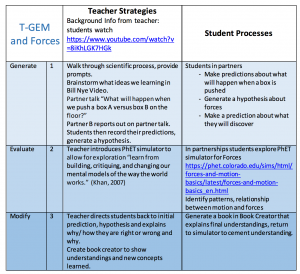The purpose of Information visualization tools or Info-Vis is to create TELE’s where students can explore more abstract concepts to help build conceptual understanding. First I found it helpful how Clements (2014) uses Zimmermann and Cunningham (1991) definition of visualization in Math as “to describe the process of producing or using geometrical or graphical representations of mathematical concepts, principles or problems, whether hand drawn or computer generated. ” In this week’s readings I explored NetLogo and how it could be used to help students build understanding around decimals. Often as we begin the exploration of decimals students apply the knowledge of numbers help previously. For example 100 is bigger than 50 they can draw 100 things and then 50 and show that their thinking is correct. When you change that to 0.101 and 0.0101 you often find they say they are the same, there is 101 in each and struggle to imagine/conceptualize what 1/10th and 1/100th of something looks like. Finkelstein et al. (2005) looked at the effects of learning in a science classroom with students learning circuits and found that overall the long term understanding was greater for those students who used computer generated simulations versus those that used real circuits. It is encouraging to hope that the same would apply in this scenario allowing for deeper and greater understanding of decimals.
Comparing Decimals
Goal: Students will be able to compare and order decimals from largest to smallest.
Materials Required:
Chrome Book
App – NetLogo – Colour Fractions
Lesson (using LfU model)
Motivation:
– students are presented with two decimal numbers on the board, they can choose how much additional recess time they will receive. Their goal is to determine which will give them more recess time.
Knowledge Construction:
– students working on own write down the two numbers and what they know so far.
– Students working in partners compare what they know and complete the following statement that “I believe ________ will allow us more recess because (provide reasoning – using words, pictures.
– Students access Color Fractions Model on NetLogo site and start by using it to represent known decimals, such as 0.1 and 0.5 to build familiarity with program.
– Students create Color Fractions Model for two represented decimals
– Students use models to determine which decimal in indeed larger.
Knowledge Refinement:
– Students return to initial statement and refine as needed with a focus on expanding and using new knowledge of why one number is larger.
References:
Clements, M. K. A. (2014). Fifty years of thinking about visualization and visualizing in mathematics education: A historical overview. In Mathematics & Mathematics Education: Searching for Common Ground (pp. 177-192). Springer Netherlands. Available from UBC. https://lib-phds1.weizmann.ac.il/Dissertations/Mathematics_and_Mathematics_Education.pdf#page=175
Finkelstein, N.D., Perkins, K.K., Adams, W., Kohl, P., & Podolefsky, N. (2005). When learning about the real world is better done virtually: A study of substituting computer simulations for laboratory equipment. Physics Education Research,1(1), 1-8. Retrieved from https://journals-aps-org.ezproxy.library.ubc.ca/prper/abstract/10.1103/PhysRevSTPER.1.010103
Wilensky, U. (2005) NetLogo Color Fractions model. http://ccl,northestern.edu/netlogo/models/ColorFractions. Center for Connected Learning and Comptuer-Based Modeling, Northwestern University, Evanston, IL.
Wilensky, U. (1999) NetLogo. http://ccl,northestern.edu/netlogo/ . Center for Connected Learning and Comptuer-Based Modeling, Northwestern University, Evanston, IL.
Xiang, L., & Passmore, C. (2014). A framework for model-based inquiry through agent-based programming. Journal of Science Education and Technology, doi:10.1007/s10956-014-9534-4

